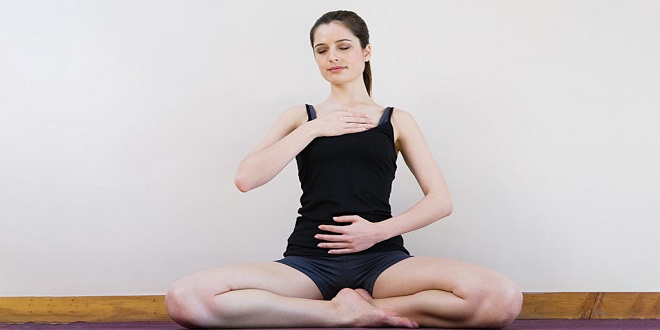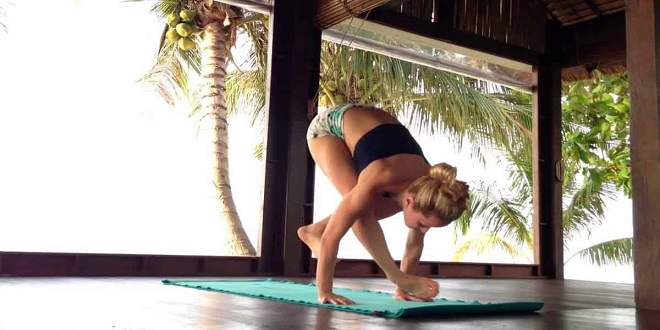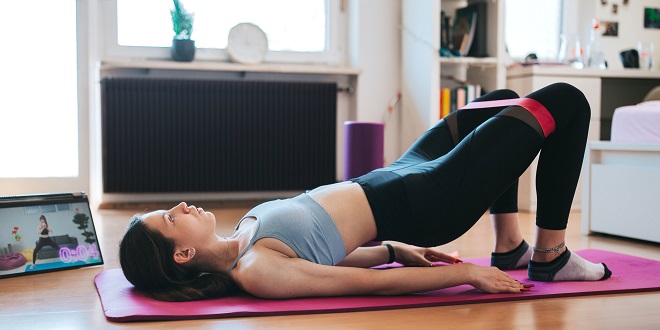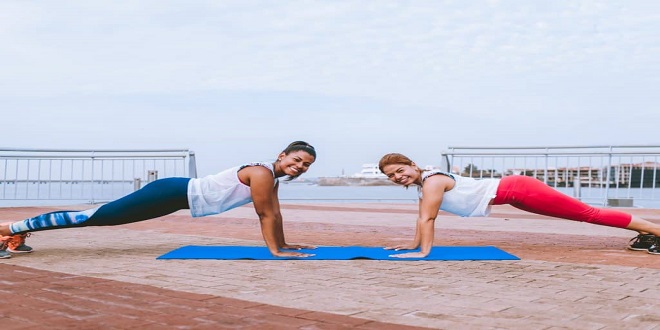Start to master your stretch; think three-dimensionally, focus on body sensations. Breathe smoothly and deeply

Stretching is a skill that everyone can master. This sequence emphasizes the various techniques you’ll need and the sensory elements of stretch that together will help to make your stretch possible. Being able to identify muscle tone is a crucial first step. Next, learning to stabilize one part of the body while another moves away from the stabilizing part is key to the effectiveness of a lengthening stretch.
Breathing into tight body areas such as the back of the rib cage demands discipline and focus. Loosening and circling motions help to oil the joints and loosen restrictive connective tissue, thus prompting muscles to expand and contract. Re-coordination exercises (see p.12) make new ranges of motion a possibility for everyone.
The exercises
Feel as much of your body as you can in the Hand pull. Memorize this muscular feeling and strive to carry that feeling into the rest of the sequence. Make the Elbow circles as sensory and luscious as if you were moving through a pool of honey. Direct the flow of your breath very specifically into any tight parts of the diaphragm. This exercise may feel difficult at first, but it can give you a very satisfying sense of relaxation
The physical boundary of the chair not only provides landmarks so you can judge how far a stretch is moving, it can also give you a sense of where your deep muscles are, which can help if you feel your movement is restricted. Sitting on a firm surface is also a sneaky way to feel some input up into your sitting bones. This pressure gives a neurological stimulus to your “righting” reflex, which helps you to lengthen up against gravity.
The Seated cross-leg twist and Shoulder wedge also show you how to press one body part against another to increase the stretch, as well as adding a strengthening element to your stretches. At the other end of the scale are the Shoulder ovals. They demonstrate an instance where learning to respect a joint’s boundary is of great importance, since neck, arms, and shoulders tend to be more sensitive to injury thanks to their potential for extreme movement. The Shoulder ovals also provide a superb nerve stretch and glide – a nerve glide being a movement that creates frictionless motion of the nerve. This, ultimately, will increase the range of movement of the whole of your upper body.
Stand with your hands by your hips, feet just past shoulder-width apart, and toes firmly planted into the floor. Feel as if your legs are pressing outwards. Lift your groin muscles towards the head (see p.19) and firm your hips. Slowly exhale as you open your arms to the sides, turning your palms forward.
Clasp your hands overhead in an O shape, then pull on the hands as if you are trying to pull them apart. Feel as if you are pulling your hands and feet away from each other as you take 2 long breaths. Keep the shape as you exhale and relax for 2 more breaths. Repeat the pull, then relax.
Bring your feet and inner thighs completely together and place your hands at your hips, with your palms facing forward. Inhale, and fold your elbows to take your fingertips to your shoulders, pointing the elbows forward.
Exhale, lift the elbows, and smoothly circle the hands up and diagonally behind you. Repeat 3 more times.





